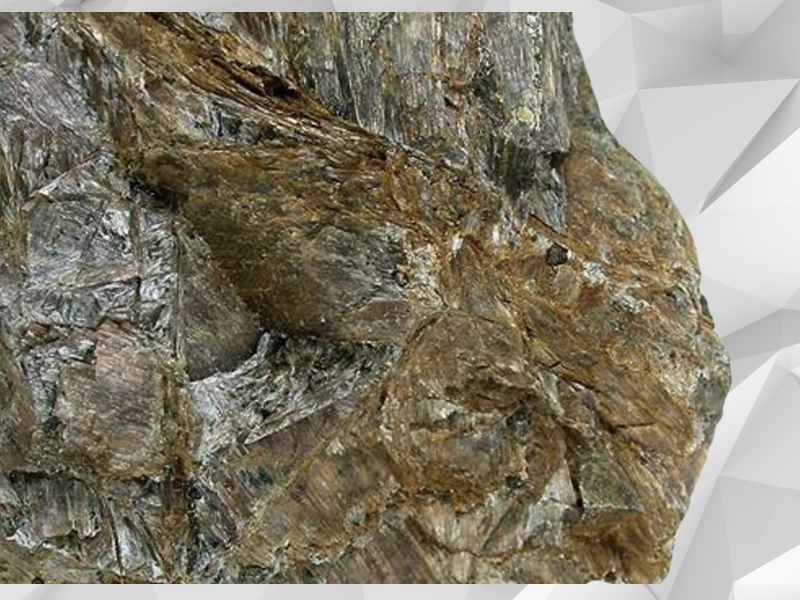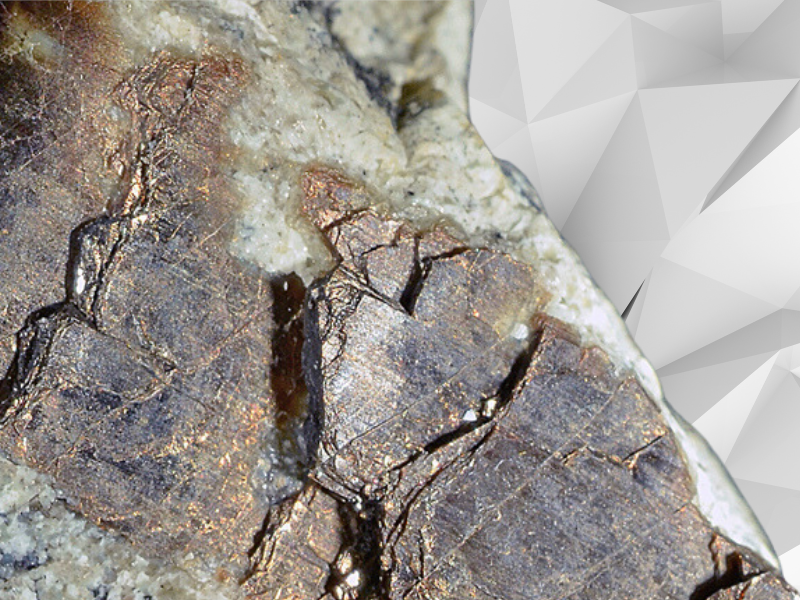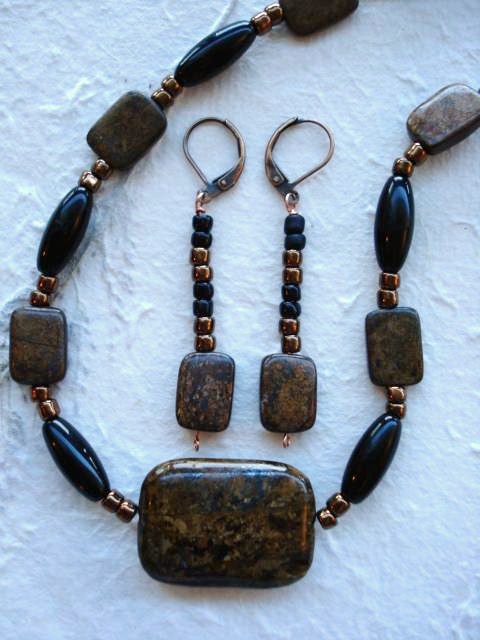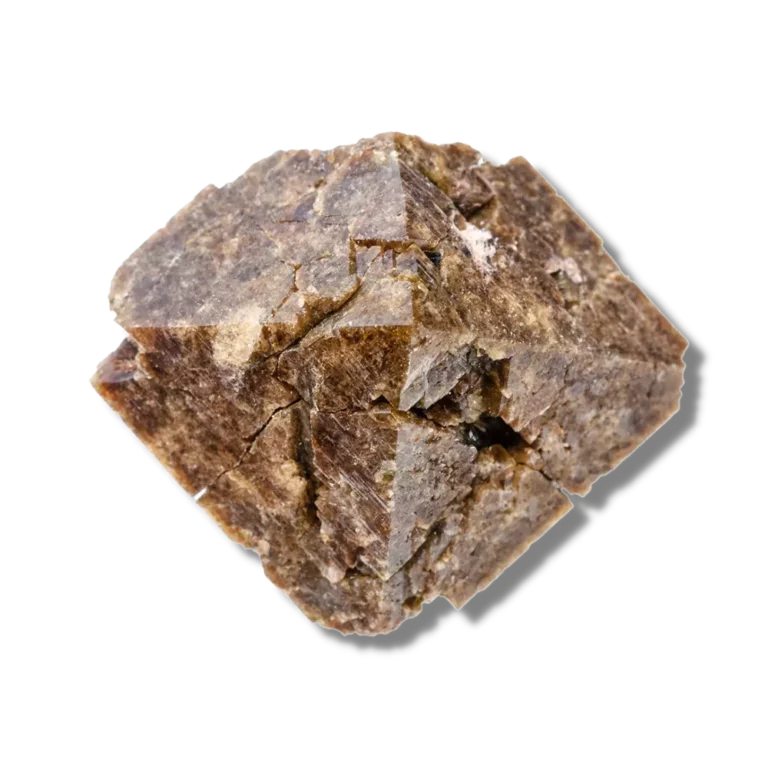Bronzite Gemstone: Properties, Benefits & Meanings

Bronzite Gemstone Overview
Bronzite is a beautiful gemstone cherished for centuries due to its unique properties, rich history, and stunning appearance. It is a member of the pyroxene mineral family, including jade, augite, and enstatite.
Bronzite is a hard, dense mineral with a metallic luster that ranges from bronze to brownish-black. A distinctive fibrous or spotted pattern sets it apart from other gemstones. Bronzite Gemstone is commonly used in jewelry making and is often cut into cabochons or beads. Bronzite is found in various parts of the world.
In this article, we will explore the properties, benefits, and meanings of Bronzite and its uses in jewelry and other applications.
What Is Bronzite Gemstone?
Bronzite is a mineral that belongs to the pyroxene group and is typically found in shades of bronze or brownish-black. It is composed of magnesium, iron, and silicon and is known for its distinctive fibrous or spotted pattern.
Bronzite is a hard, dense mineral with a metallic luster and is often used in jewelry making due to its durability and attractive appearance. It is found in various parts of the world, including India, Brazil, Madagascar, Austria, and the United States. Bronzite is believed to have been named after its bronze-like appearance.
How is Bronzite Gemstone Formed?
Bronzite is a mineral that forms through metamorphism, which occurs when rocks are subjected to high temperatures and pressures over a long period. Therefore, Bronzite is typically found in igneous and metamorphic rocks and is often associated with other minerals such as pyroxene and olivine.
It is formed when magnesium and iron-rich rocks are subjected to high temperatures and pressures, which cause the minerals to recrystallize and form Bronzite. This process can take millions of years, and the resulting mineral can be found in various shapes and sizes, ranging from small crystals to massive boulders. The unique fibrous or spotted pattern of Bronzite results from its crystal structure.
Physical Properties
| Mineral Group | Pyroxene |
| Formula | (Mg,Fe)2Si2O6 |
| Chemical Name: | Magnesium Iron Silicate |
| Color | Brown, Green-Brown, Bronze |
| Hardness (Mohs scale) | 5.5 – 6 |
| Refractive Index | 1.65 – 1.75 |
| Fracture | Conchoidal to Uneven |
| Luster | Vitreous to Pearly |
| Specific Gravity | 3.2 – 3.4 |
| Transparency | Translucent to Opaque |
Etymology
The term “bronzite” comes from the Greek word “bronzein,” which means “to give a metallic appearance” or “to bronze.” This name was given to the mineral due to its bronze-like metallic appearance and high iron content.
However, it should be noted that Bronzite is not a true mineral species but a trading name for a variety of enstatite, a member of the pyroxene mineral group. The term “bronzite” is commonly used in the gem and mineral trade to refer to this brownish-green or bronze-colored variety of enstatite.

Where is Bronzite Gemstone Found?
Bronzite gemstones can be found in the following countries:
- Austria
- Australia
- Brazil
- Canada
- China
- Finland
- Germany
- Greenland
- India
- Italy
- Madagascar
- Norway
- Russia
- Sweden
- Switzerland
- Ukraine
- United States (Arizona, Colorado, New Mexico)

Bronzite Gemstone Appearance
Bronzite gemstone has a distinctive metallic-like appearance with a bronze or brownish-green color. It typically has a vitreous to pearly luster and can be translucent to opaque in transparency.
The stone often features metallic-looking swirls or dots that create a unique pattern known as the “Schiller effect” or “cat’s eye effect.” The Schiller effect in Bronzite is caused by the reflection of light from numerous microscopically thin layers within the crystal structure, which creates a chatoyant or reflective effect when the stone is cut and polished into cabochons or beads. The overall appearance of Bronzite is earthy and natural.
Types of Bronzite Gemstone
Bronzite is a variety of enstatite, a mineral species in the pyroxene group. There are no known varieties of Bronzite, but different types of enstatite can exhibit a range of colors and characteristics. Some of these enstatite varieties include:
- Green enstatite: A green variety of enstatite that is colored by traces of chromium or iron.
- Hypersthene: A brown or greenish-black variety of enstatite that contains more iron than magnesium.
- Ferrosilite: A dark green or black variety of enstatite rich in iron.
- Clinoenstatite: A pale yellow or green variety of enstatite formed at high pressure and temperature conditions.
While these enstatite varieties may be similar to Bronzite, they are not typically classified as Bronzite gems. Bronzite gemstones are generally characterized by their distinctive bronze or brownish-green color and metallic-like appearance.

Bronzite Gemstone Value and Price
The value and price of bronzite gemstone can vary depending on several factors, including carat weight, cut, clarity, and color.
Carat weight: The larger the bronzite gemstone, the higher its price is likely to be. Larger gems are rarer and require more effort to extract and cut, which can contribute to their higher price.
Cut: The cut of a bronzite gemstone can significantly affect its value. A well-cut sample will have symmetrical facets, a smooth surface, and excellent proportions, all of which will enhance its overall appearance and value.
Clarity: Bronzite gemstones are known for their Schiller effect, a chatoyant effect caused by inclusions of iron or other minerals within the crystal structure. Therefore, inclusions and other imperfections are generally accepted and not considered significant value factors.
Color: The color of Bronzite can vary from brown to green-brown, and the intensity and saturation of the color can affect its value. Typically, the most desirable bronzite gemstones have a rich, deep brownish-green color with a prominent Schiller effect.
Other factors that can affect the value and price of bronzite gemstones include their rarity, origin, and the demand for the gem in the market.
How Can You Tell if Bronzite Gemstone Is Real?
To verify the authenticity of bronzite gemstones, several tests can be done. These tests include:
- Visual inspection: Bronzite gemstone has a unique appearance with a metallic-like luster and brownish-green or bronze color. A visual inspection of the gem can reveal signs of artificial treatment, such as dyeing or heating.
- Hardness test: Bronzite has a hardness of 5.5 to 6 on the Mohs scale, which means a knife or other sharp object cannot easily scratch it. A hardness test can help determine whether a gemstone is genuine or imitative.
- Specific gravity test: Bronzite has a specific gravity of 3.2 to 3.4, which measures its density compared to water. A specific gravity test can help identify the authenticity of a bronzite gemstone.
- Refractometer test: The refractive index of Bronzite ranges from 1.65 to 1.75, which measures how light passes through the gemstone. A refractometer can measure the refractive index of a gem and help identify its authenticity.
- UV light test: Some gemstones, including Bronzite, may fluoresce or show different colors under UV light. A UV light test can help identify the authenticity of a gem by revealing any fluorescence or color change.
It’s important to note that these tests are not foolproof and should be performed by a trained gemologist or a gemstone laboratory. Additionally, purchasing from a reputable and trusted source is essential to ensure quality and authenticity.
What Does Bronzite Gemstone Symbolize?
Bronzite gemstone is believed to symbolize strength, grounding, and protection. In addition, it is said to help increase self-confidence, enhance focus, and provide a sense of inner peace and harmony. Bronzite is also believed to be a stone of courtesy and assistance, helping individuals to maintain a positive and diplomatic attitude in challenging situations.
In addition, bronzite gemstone is said to be helpful for those dealing with stressful or overwhelming situations. It is believed to help release feelings of doubt and uncertainty, replacing them with a sense of stability and security. Bronzite is also said to be helpful for those seeking to enhance their creativity and imagination and their ability to communicate effectively with others.
Bronzite gemstone is thought to be a powerful stone that can help individuals achieve their goals and navigate through difficult times with strength, resilience, and grace.
Uses of Bronzite Gemstone
Bronzite gemstone has been used for both ornamental and metaphysical purposes for centuries. Some of its uses include:
- Jewelry: Bronzite gemstone is a popular choice for jewelry, including bracelets, necklaces, earrings, and rings. It is often used as a decorative stone, given its unique metallic-like luster and rich, earthy colors.
- Decorative objects: Bronzite is sometimes used to create decorative objects, such as figurines, bookends, and paperweights. Its unique appearance and durability make it an ideal choice for these items.
- Metaphysical purposes: Bronzite is believed to have powerful metaphysical properties that can provide physical, emotional, and spiritual benefits. It is said to promote inner peace, confidence, and self-esteem, while also helping to alleviate stress and anxiety.
- Healing purposes: Bronzite is sometimes used in alternative healing practices, such as crystal healing, where it is believed to promote physical healing and well-being. It is said to help support the immune system, alleviate digestive issues, and reduce inflammation.
- Spiritual practices: Bronzite is sometimes used in spiritual practices, such as meditation and yoga, which are believed to enhance focus and concentration, promote inner strength, and foster a deeper sense of connection to the earth.
Is Bronzite Gemstone a birthstone?
No, Bronzite is not considered a traditional birthstone for any month. However, it is sometimes used as an alternative stone for individuals born under the zodiac sign Leo, which falls between July 23 and August 22. Bronzite is also believed to have various metaphysical properties, such as promoting self-confidence and helping to alleviate self-doubt and indecision.
How To Take Care Of Bronzite Gemstone Jewelry?
Bronzite is a beautiful gemstone used to make stunning jewelry pieces. To keep your bronzite gemstone jewelry looking its best, here are some tips on how to take care of it:
- Avoid exposing your bronzite jewelry to harsh chemicals, such as perfumes, hairsprays, and cleaning products. These chemicals can damage the stone’s surface and cause it to lose its luster.
- Clean your bronzite jewelry regularly with a soft, damp cloth. This will remove any dirt or grime accumulated on the stone’s surface. Do not use harsh chemicals or abrasive cleaners on Bronzite, which can cause scratches or other damage.
- Store your bronzite jewelry in a cool, dry place. Avoid exposing it to direct sunlight or extreme temperatures, as this can cause the stone to fade or crack.
- Avoid wearing your Bronze jewelry while doing activities that could damage it, such as swimming or exercising. This will help prevent scratches, chips, or other damage to the stone.
- Take your bronzite jewelry to a professional jeweler for cleaning and maintenance. They can check for any damage or wear and tear and make necessary repairs or adjustments to your jewelry.
You can keep your jewelry looking its best by following these simple tips.
FAQ
What are the metaphysical properties of Bronzite?
Bronzite is believed to have grounding and protective properties. It is thought to help dispel negative energy and promote self-confidence, courage, and creativity.
How should Bronzite be cared for?
Bronzite is a relatively hard stone with a Mohs hardness of 5.5-6, making it durable for everyday wear. It can be cleaned with warm, soapy water and a soft brush. However, it should be protected from scratches and sharp blows.
Can Bronzite be used in jewelry?
Bronzite can be used in necklaces, bracelets, earrings, and rings. It is often cut into cabochons or beads and paired with other gemstones and metals for a striking contrast.
What are the benefits of wearing Bronzite gemstones?
Bronzite Gemstone is believed to provide a range of benefits to its wearers, including protection from negative energies, grounding, and enhancing self-confidence. It is also said to aid decision-making, promote inner harmony, and improve one’s overall well-being.
Which gemstones go best with Bronzite in Jewelry?
When it comes to pairing gemstones with bronzite, there are several options that can create a stunning look. One popular combination is to pair bronzite with earthy, warm-toned gemstones such as tiger’s eye, jasper, and carnelian. Another option is to pair bronzite with cool-toned gemstones like blue topaz or amethyst, creating a beautiful contrast of warm and cool colors.









